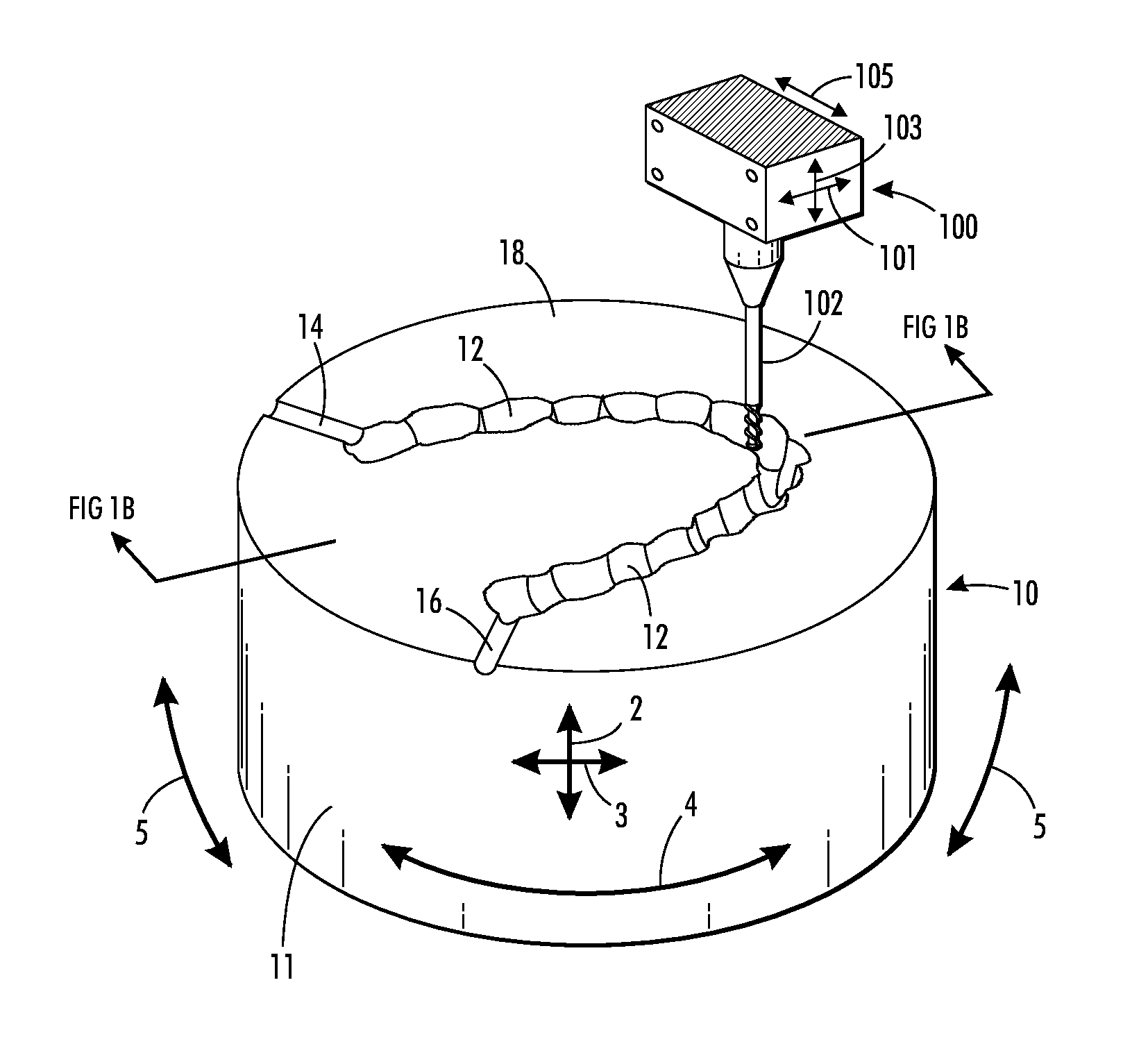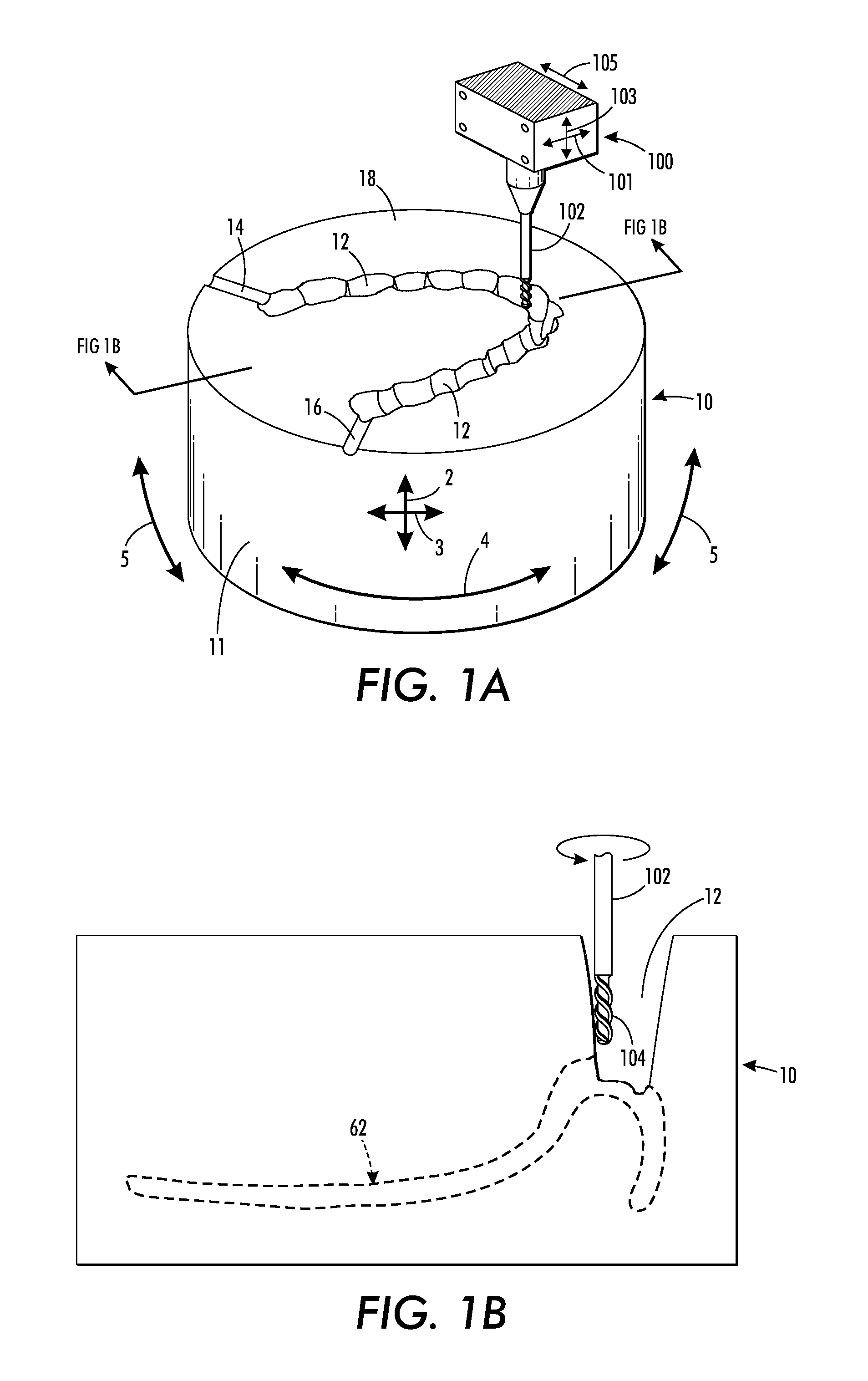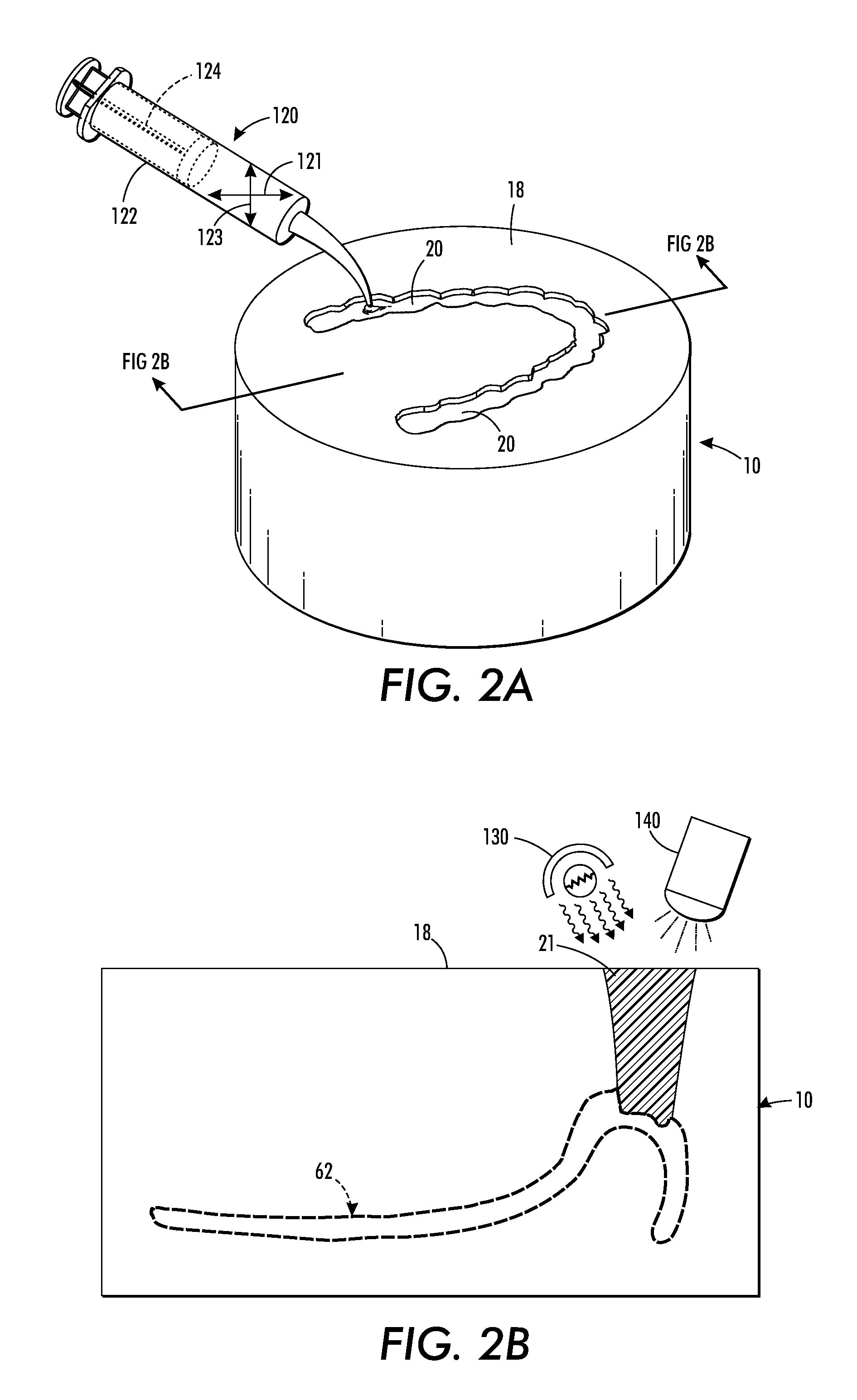Denture and method and apparatus of making same
a technology of dental prosthesis and occlusion, which is applied in the direction of dental prosthesis, manufacturing tools, impression caps, etc., can solve the problems of high labor intensity, improper occlusion (upper and lower teeth engagement), and high labor intensity in the manufacture of dental prosthesis, so as to increase the likelihood of patient acceptance and optimize the fit and aesthetics
- Summary
- Abstract
- Description
- Claims
- Application Information
AI Technical Summary
Benefits of technology
Problems solved by technology
Method used
Image
Examples
Embodiment Construction
[0063]For a general understanding of the present invention, reference is made to the drawings. In the drawings, like reference numerals have been used throughout to designate identical elements.
[0064]In accordance with the present disclosure, there are provided a method and an apparatus for making a dental prosthesis, such as a denture, by using a block of denture base material as a receptacle for molding the teeth of the denture. The block of denture base material is milled by a milling machine or other material removal device to create a mold for the teeth, dispensing liquid tooth material in the mold and curing it into solid tooth material, and milling the combination of cured solid tooth material in the mold and denture base material to form the denture.
[0065]Turning first to FIGS. 1A and 1B, a block 10 of denture base material is shown in the process of having a first cavity 12 being formed therein. The first cavity 12 is formed to match the generally U-shaped contour of natura...
PUM
| Property | Measurement | Unit |
|---|---|---|
| Dimension | aaaaa | aaaaa |
| Translucency | aaaaa | aaaaa |
Abstract
Description
Claims
Application Information
 Login to View More
Login to View More - R&D
- Intellectual Property
- Life Sciences
- Materials
- Tech Scout
- Unparalleled Data Quality
- Higher Quality Content
- 60% Fewer Hallucinations
Browse by: Latest US Patents, China's latest patents, Technical Efficacy Thesaurus, Application Domain, Technology Topic, Popular Technical Reports.
© 2025 PatSnap. All rights reserved.Legal|Privacy policy|Modern Slavery Act Transparency Statement|Sitemap|About US| Contact US: help@patsnap.com



